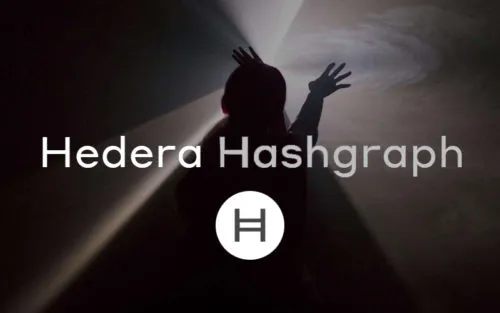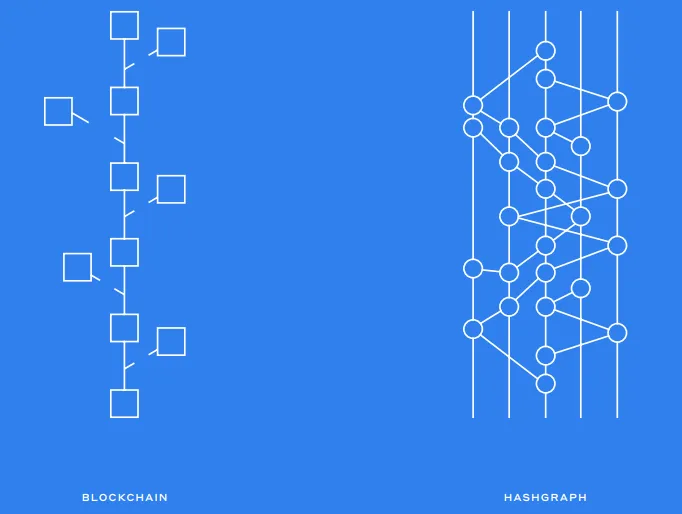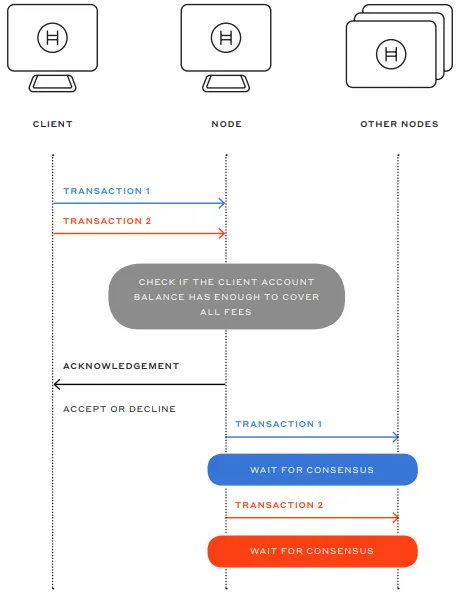The project involves the use of hashgraph technology, which allows you to implement a distributed consensus algorithm. Hedera is a distributed book that will function using hashgraph technology. The result of the Hedera Hashgraph ICO project should be a platform capable of running DApps applications and smart contracts.
Development team
The project of the company Hashgraph Consortium, LLC has already raised $ 18 million. The developers have launched a test network, which is currently available only to platform creators and board members.
The two main team members, Limon Baird and Mance Harmon, have previously achieved success after implementing two joint projects: Trio Security and BlueWave Security. Both of these initiatives have grown to successful Symbol Technologies and JST Partners after three and six years, respectively. These prior successes instill confidence in the ability of Hedera Hashgraph authors to achieve their goals.
A total of 15 people work on the project, including:
Lemon Baird (co-founder, technical director and chief scientist, inventor of the Hashgraph algorithm, graduated from Carnegie Mellon University, has a doctorate in computer science, has 20 years of experience in technology and start-ups, previously held the position of professor of computer science at the Academy The Air Force and the senior scientist in several laboratories, the author of numerous patents and publications in reputable scientific journals).
Mens Harmon (co-founder and CEO, graduated from the University of Massachusetts and the University of Mississippi, has a master's degree in computer science, an experienced leader and entrepreneur with more than 20 years of leadership experience in multinational corporations, government agencies and high-tech start-ups, previously worked in the Ping Identity laboratory ).
Tom Trowbridge (President, graduated from Yale University and Columbia University, has an MBA degree, previously headed the New York office of the British company Odey Asset Management, and also held various positions at Lombard Odier, Atticus Capital and Goldman Sachs).
Patrick Harding (senior vice president of products, graduated from the University of New South Wales, has a bachelor's degree in computer science and more than 25 years of experience in distributed computing, cybersecurity, and digital identification, previously served as vice president and security architect at Fidelity Investments) .
Jordan Fried (vice president of global business development, investor, previously co-founder and CEO of Buffered VPN, the fastest growing personal online VPN network).
Main features of Hedera Hashgraph
The project aims to create a platform that will be a data structure capable of challenging the traditional blockchain technology.
Speed is one of the most important aspects of block chain development. This problem is relevant even for the most popular networks such as Bitcoin and Ethereum. When it comes to speed and scalability, developers are faced with the issue of overcoming current obstacles to the wider use of block chains.
Virtually any blockchain can work quickly with a small transaction volume, but with an increase in the number of users and the amount of funds transferred between them, the situation changes dramatically. It is almost impossible to verify in advance the network’s maximum capacity for loads, because stress tests do not provide a completely reliable picture. This is due to the fact that the variance and volatility of future events and the actions of the end user are extremely difficult to predict.
The authors of the project are focused on improving the speed of transaction processing. They intend to raise this bar thanks to a unique consensus algorithm and platform protocol.
The interaction of the platform architecture components is carried out through the Gossip protocol (gossip protocol). After each transaction, one decentralized component shares all the data it knows with the other two components. If one of the two components sees missing data when viewing the information, it will update its history.
Then the two components that received the information will do the same, sharing information with two other random components. The process will be repeated until the transaction is distributed throughout the data structure. The advantage of such a protocol is that instead of a sequential or parallel execution environment, exponential data dissemination is used. This means that consensus can be reached extremely quickly and with little overhead.
Another aspect of the platform is security. Hashgraph will provide a secure environment for transactions in several ways. The network will use the concept of "justice", according to which small groups of attackers will not be able to change the order of transactions.
As mentioned above, the exponential connection speed will be implemented within each transaction. This makes any outside intervention theoretically impossible.
Another scenario is the possible attack of a transaction in order to exclude it from the history of the database. However, for this, the attacker must control at least one third of the network, which is almost impossible due to the decentralized nature of the blockchain and the method used to distribute data within the Hedera Hashgraph platform.
In addition, all information distributed between network nodes can be confirmed by the so-called “virtual voting”.
Virtual voting system
To guarantee confirmation of the correctness of data transmitted between nodes, virtual voting will be used. In order for the information to be considered valid, 2/3 of the network nodes need to “certify” this. This voting process means that nodes will be able to track information through their neighbors right down to the original data source.
Speed and consensus
The transaction speed and unique features of the consensus protocol that Hashgraph uses are two distinguishing features of this project. While most blockchain-based cryptocurrencies are capable of checking less than 100 transactions per second (TPS), Hashgraph boasts 250,000 TPS. This is a very high figure, but to achieve it requires some compromise.
At the core of the Hashgraph consensus is a mechanism for checking information on the network. For example, in the Bitcoin blockchain, miners first of all confirm transactions with higher commissions, because they are interested in making more profit. This means that users who offer a large fee for transferring funds, can count on the priority processing of transactions. This approach is unfair to other members of the network.
In a Hashgraph framework, if one transaction receives confirmation of 2/3 of the majority of nodes compared to another transaction, then it is processed first. Users have no way to promote their transfer by paying more.
In fact, this method is based on the principle of who first submitted an application for a transaction, and he can count on its priority processing. The approach in which the one who paid the most gets the advantage in the queue does not work here. This allows for a “fair” approach to the organization of payments in the network compared to most traditional methods of achieving consensus.
Blockchain vs Heshgraf
Despite the presence of many differences between these two technologies, the most significant of them is that Hashgraph is an allowed private blockchain, and the blockchain is publicly available and not allowed. A permitted private network means that the identification and the number of nodes in the network are known in advance, and there is no fixed number of nodes in the public network.
This is quite a big difference and too complicated if you dive deep, but you need to know it. However, this concept does not make Hashgraph a centralized platform. In this regard, it is no different from the Bitcoin blockchain.
Benefits
The Hedera Hashgraph platform is aimed at solving five main obstacles for the introduction of block technology in the market of traditional payment systems:
performance;
security;
stability;
control;
regulatory compliance.
The hashgraph data structure and consensus algorithm provide a best-in-class, unbeatable combination of performance and security. The Hedera Platform and Management Board are capable of providing transparency, innovative features and platform stability. Its tools allow you to use the KYC service (“know your customer”) and the system for protection against money laundering, as well as cross-sectoral functions to ensure management and decision-making within the global network and cryptocurrency ecosystem.
disadvantages
The authors of the project have not yet published details about the upcoming crowdsale of tokens of the platform. In addition, the official technical documentation does not provide enough details about the project.
Period and conditions of the Hedera Hashgraph ICO
Official website: https://www.hederahashgraph.com
At the time of writing the review, the authors of the project did not publish information about the upcoming crowdsale. So far it is known only that following the results of the presale it was possible to raise $ 18 million.
Conclusion
Based on the information currently available, it is safe to say that the project team and technologies are fantastic and have great potential.
If the developers correct a number of current shortcomings in the form of a lack of detailed information about the project and publish a clear roadmap, which they will strictly adhere to, the project has every chance of becoming a major player in the blockchain sphere.
In the long term, Hedera Hashgraph has more potential, but success is completely dependent on understanding what the authors intend to realize and how exactly the development of the platform will occur.
In general, it can be noted that this project is suitable for patient investors, and for those who do not like to wait long, it is better to find another option for investment. 


